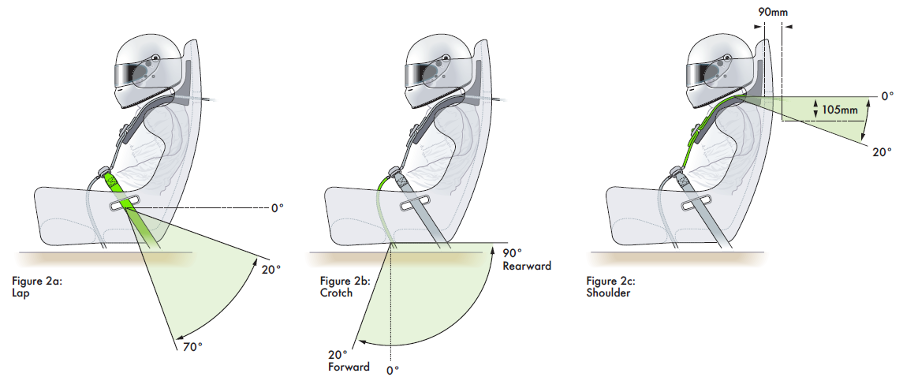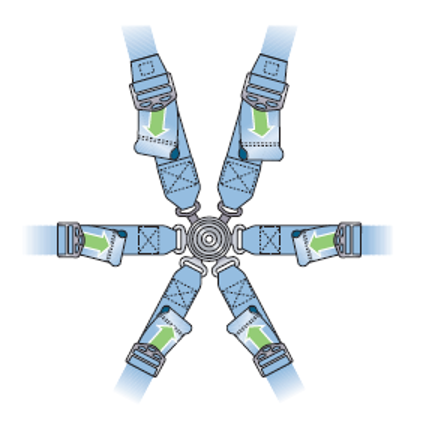The FIA has released a recent safety bulletin, emphasising the importance of safety harnesses when competing.
The bulletin focuses on a number of steps competitors should take in order to equip their harness correctly so that it provides optimal protection in the event of an accident.
Whilst the release is focused on International competition, competitors must note that the information is relevant to all levels of competition under Motorsport Australia, from grassroots all the way to national competition.
With officials able to deny participation if the harnesses are not installed correctly, the steps provided are the easiest way to avoid issue before competing.
More information can be found in the FIA International Sporting Code under Appendix J or the championship technical regulations.
1 - Correct buckle position in relation with the pelvic/iliac crest area
The lap straps must fit tightly in the bend between the pelvic crest and the upper thigh. Under no conditions must they be worn over the region of the abdomen. The lap and crotch straps must hold the pelvic region over the greatest possible surface.
 2 – Safety Harness anchorage points
2 – Safety Harness anchorage points
It is important that safety harness straps are anchored in accordance with the FIA International Sporting Code under Appendix J or/and to the championship technical regulation.
It is prohibited for the safety harnesses to be anchored to the seats or their supports. This is to ensure in case the seat anchorage points fail during an accident the driver will not be ejected together with the seat and harness. Competitors are reminded that Appendix J or/and championship technical regulation have regulations in place to allow to install the harness with the recommended straps angles mentioned in below point 5.
3 - Safety Harness straps routing
The shoulder, lap and crotch straps must pass through the dedicated seat slots, in order to ensure that they wrap and hold the shoulder and pelvic region over the greatest possible surface. All the strap must pass freely through the seat slots in order to avoid the webbing to stress the seat slot edge.
Care must be taken that the straps cannot be damaged through chafing against sharp edges.
4 - Free volume around the safety harness buckle
To avoid an involuntary opening of the safety harness while driving competitors must check the distance of the hands to the safety harness buckle during the steering. During a movement of the steering wheel by 180 degrees to the left and right, the hands should always be at a safe distance from the lever of the buckle.
5 - Safety Harness Installation
The safety harness must be installed in accordance with the FIA International Sporting Code under Appendix J or/and to the championship technical regulation, but whenever possible it should be as close as possible to the angles shown below.
 6 - Safety Harness tension
6 - Safety Harness tension
Studies performed by the FIA Safety Department have demonstrated that safety harness tension is important to reduce the risk of serious injuries and for the correct functioning of the Frontal Head Restraint (FHR) device. It is therefore important that competitors always keep their safety harness properly tightened.
 7 - Interaction between Safety Harness and Frontal Head Restraint Device
7 - Interaction between Safety Harness and Frontal Head Restraint Device
A Frontal Head Restraint (FHR) device restrains the driver’s head relative to his torso during a frontal or angled-frontal impact thereby, reducing the loads to the head and neck. In order to obtain the most protection provided by a FHR device, it is important that the safety harness is installed in accordance with the FIA guide and installation specification for HANS / Hybrid & Hybrid Pro devices in racing competition.